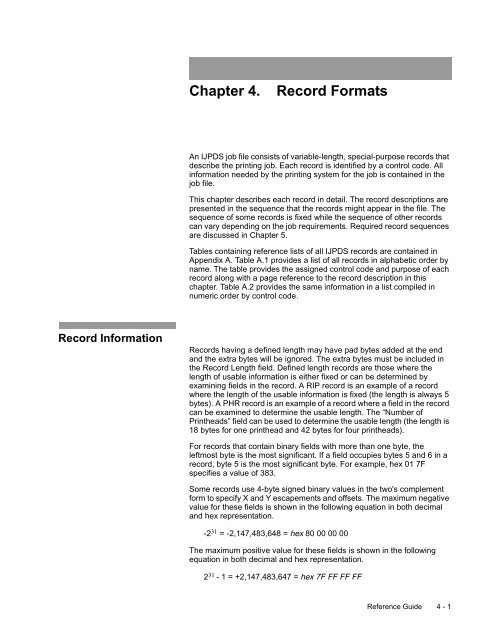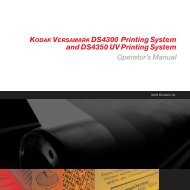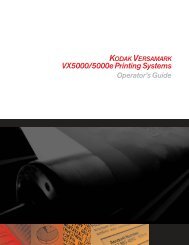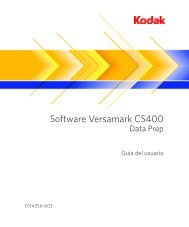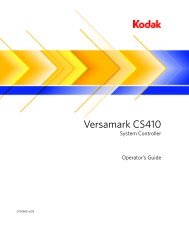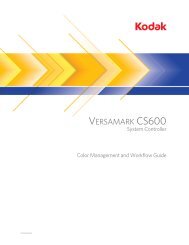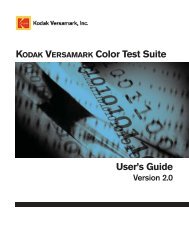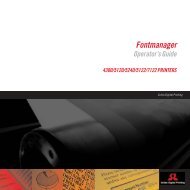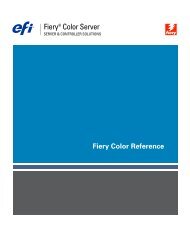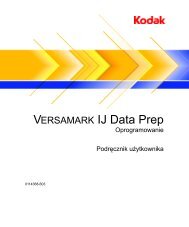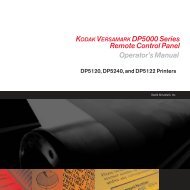You also want an ePaper? Increase the reach of your titles
YUMPU automatically turns print PDFs into web optimized ePapers that Google loves.
Record Information<br />
Chapter 4. Record Formats<br />
An IJPDS job file consists of variable-length, special-purpose records that<br />
describe the printing job. Each record is identified by a control code. All<br />
information needed by the printing system for the job is contained in the<br />
job file.<br />
This chapter describes each record in detail. The record descriptions are<br />
presented in the sequence that the records might appear in the file. The<br />
sequence of some records is fixed while the sequence of other records<br />
can vary depending on the job requirements. Required record sequences<br />
are discussed in Chapter 5.<br />
Tables containing reference lists of all IJPDS records are contained in<br />
Appendix A. Table A.1 provides a list of all records in alphabetic order by<br />
name. The table provides the assigned control code and purpose of each<br />
record along with a page reference to the record description in this<br />
chapter. Table A.2 provides the same information in a list compiled in<br />
numeric order by control code.<br />
Records having a defined length may have pad bytes added at the end<br />
and the extra bytes will be ignored. The extra bytes must be included in<br />
the Record Length field. Defined length records are those where the<br />
length of usable information is either fixed or can be determined by<br />
examining fields in the record. A RIP record is an example of a record<br />
where the length of the usable information is fixed (the length is always 5<br />
bytes). A PHR record is an example of a record where a field in the record<br />
can be examined to determine the usable length. The “Number of<br />
Printheads” field can be used to determine the usable length (the length is<br />
18 bytes for one printhead and 42 bytes for four printheads).<br />
For records that contain binary fields with more than one byte, the<br />
leftmost byte is the most significant. If a field occupies bytes 5 and 6 in a<br />
record, byte 5 is the most significant byte. For example, hex 01 7F<br />
specifies a value of 383.<br />
Some records use 4-byte signed binary values in the two's complement<br />
form to specify X and Y escapements and offsets. The maximum negative<br />
value for these fields is shown in the following equation in both decimal<br />
and hex representation.<br />
-2 31 = -2,147,483,648 = hex 80 00 00 00<br />
The maximum positive value for these fields is shown in the following<br />
equation in both decimal and hex representation.<br />
2 31 - 1 = +2,147,483,647 = hex 7F FF FF FF<br />
Reference Guide 4 - 1


